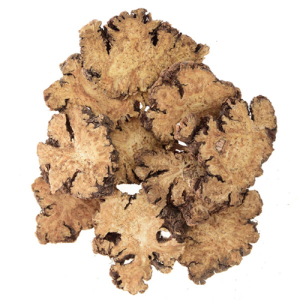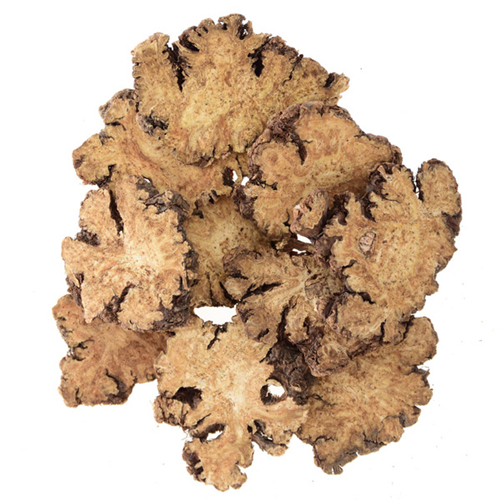
Rhizoma Chuanxiong Extract 10:1 TLC
- Product Code: RHE101
| Ship From Warehouse | In Stock | Backorder Lead Time |
|---|---|---|
|
|
Login to View. | Login to View. |
Rhizoma Chuanxiong Extract 10:1 TLC

When it comes to lovage root herb, medicinally it doesn't necessary means Ligusticum sinense (Gao Ben). But more often it refers to Szechuan lovage root (Chuan Xiong) instead. To tell them apart, the former is commonly known as Chinese lovage root due to it is a special species of plant in China. And because its middle part, between root and seedling, looks like straw, sometimes it is also called straw weed. As a matter of fact, its Chinese name of Gao Ben is literally translated to "root of rice straw" in English.
Medicinally it refers to the dried rhizome and roots of Ligusticum Sinensis Oliv. Or Ligusticum jeholense Nakai et Kitag., the plants in family Umbelliferae. Other common names of this herb include ligusticum root, rhizoma et radix ligustici, ligusticum sinense root, ligustici rhizoma, ligusticum rhizome and root, and so on. It is native to China and mainly produced in Shaanxi, Gansu, Henan, Sichuan, Hubei, Hunan and other provinces. And Ligusticum jeholense Nakai et Kitag. is mainly from Liaoning, Jilin, Hebei, and other places. The best harvesting time is in autumn when leaves are withered or in next spring when seedlings come out. Next remove the dirt, dry in the sun or on the fire, slice into pieces, and use raw.
Lovage rhizome is in the shape of irregular nodular cylinder, slightly twisted, 3 to 10cm long, 1 to 2cm in diameter, and with branches. Surface is brown or dark brown, rough, and with longitudinal wrinkles. It is lightweight, hard, easily broken, and with yellow or yellow-white, fibrous cross section. It has fragrant odor and spicy, bitter, and slightly numb flavor.
Main chemical constituents are 0.38% to 0.65% volatile oil in Ligusticum Sinensis and 1.5% in Ligusticum jeholense. And volatile oil mainly contains 3-Butylphthalide, Cnidilide, neo-Cnidilide, β-Phellandrene, trans-Ocimene, α-Phellandrene, α-pinene, Limonene, Terpinolene, Elemicin, Myristticin, γ-cadinene, lavandulol, methyleugenol, and so on.
Lovage root benefits
It has an agreeable aromatic smell. As a result, it was once used as spice called Ligusticum incense by ancients, according to "Compendium of Materia Medica", written by Li Shizhen. In addition, it has a lot of health benefits, in particular its healing property for parietal headache. Actually this herb is the must-have ingredient in curing parietal headache formulas. As one of medical herbs with awesome healing properties, the uses for lovage are much wider over time. Actually for easier applications, today it has been made into lovage root tea, powder, extract, essential oil, tincture, and more. So, what make it with that amazing healing property? And modern pharmacology has something to tell.
Modern pharmacological actions of lovage herb
1. Its neutral oil has sedative, analgesic, antipyretic and anti-inflammatory effects. In addition, its neutral oil can inhibit intestinal and uterine smooth muscle, significantly slow down the oxygen consumption rate, prolong survival time of mice, increased tissue hypoxia, and counteract posterior pituitary hormone-induced myocardial ischemia in rats;
2. Its alcohol extract has antihypertensive effect and antibacterial effect on common pathogenic dermatophytes;
3. Ligustilide, phthalide and its derivatives can relax tracheal smooth muscle in experimental animals, and thus it has a significant role in relieving asthma.
